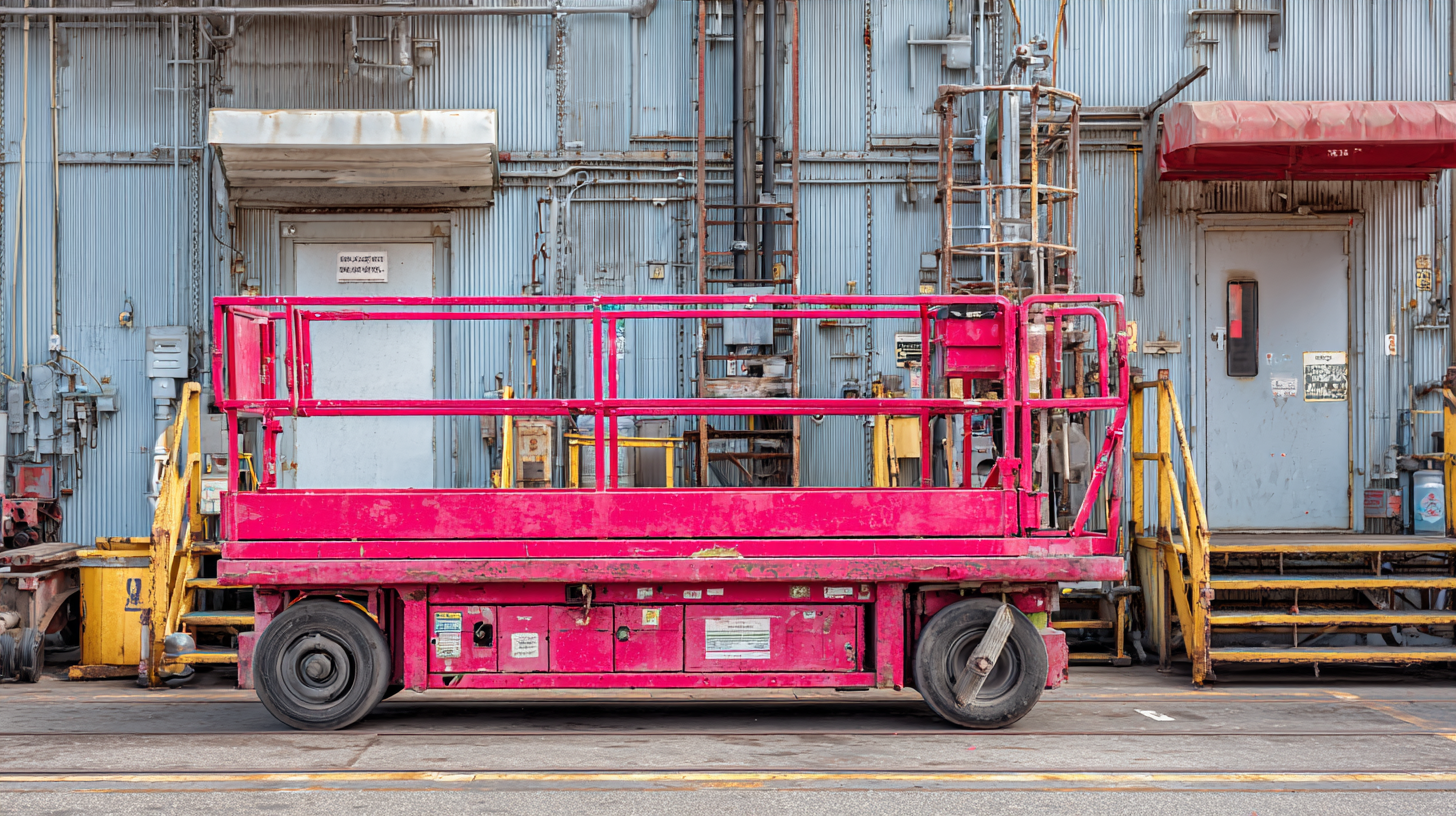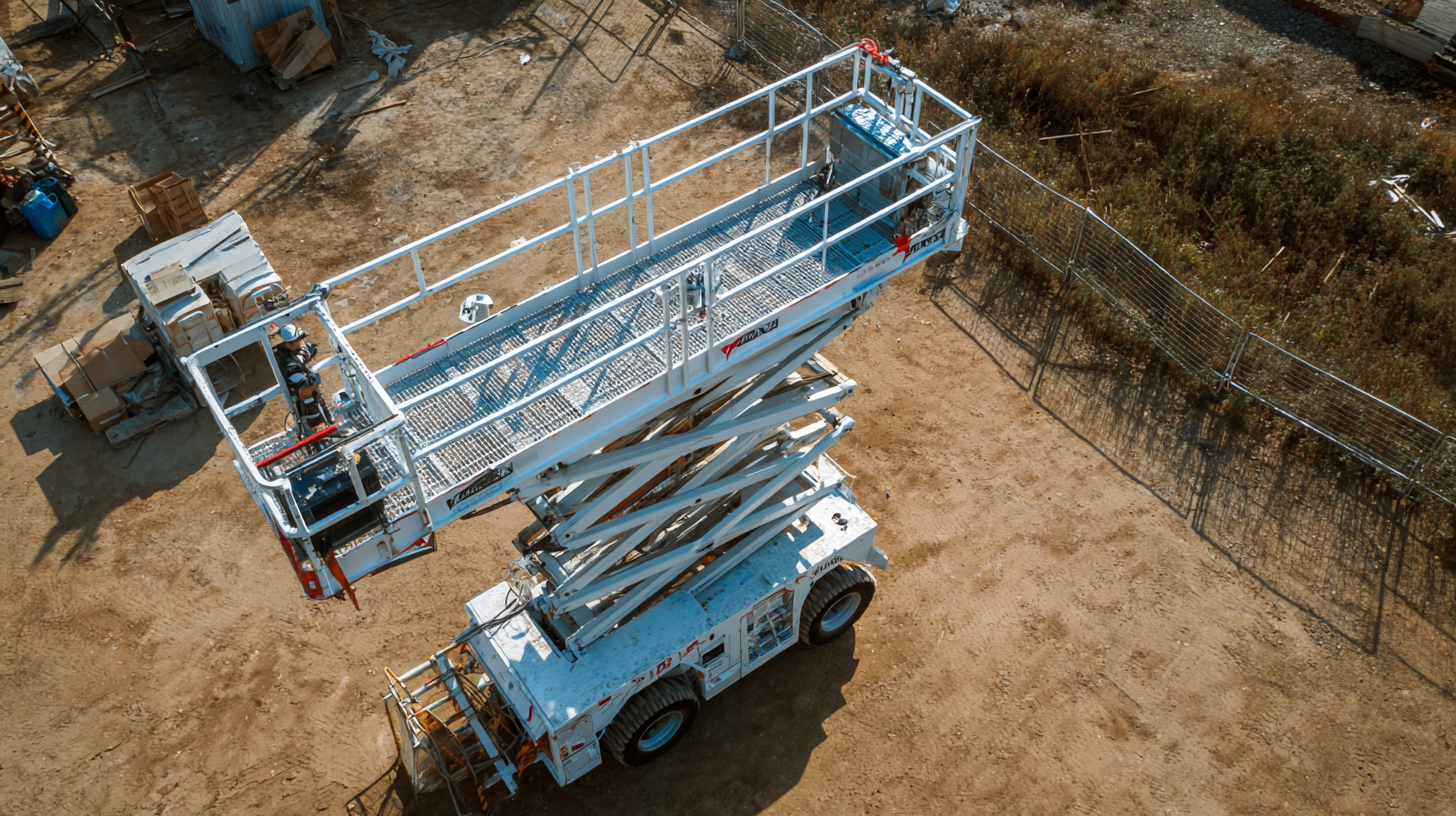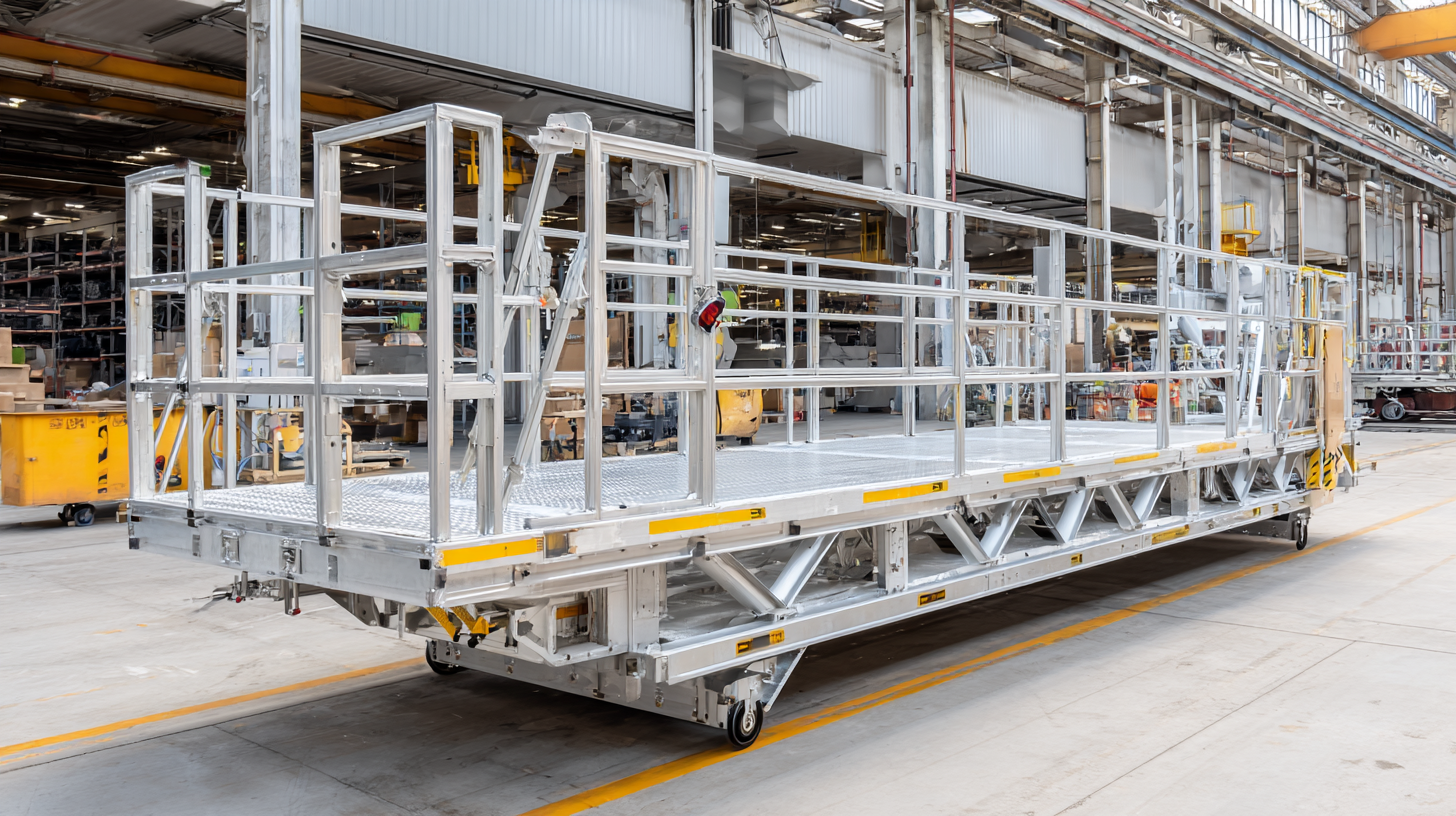Exploring Unique Alternatives to the Best Mobile Elevated Work Platform Options
In the ever-evolving landscape of construction and maintenance, the demand for efficient and safe access solutions has led to the proliferation of Mobile Elevated Work Platform Types. While traditional models such as scissor lifts and boom lifts have long dominated the market, there exists a myriad of unique alternatives that cater to specific needs and environments.
Whether you are working in tight spaces, on uneven terrain, or require enhanced maneuverability, exploring these alternative options can significantly improve productivity and safety on job sites.

This blog delves into top strategies for identifying and utilizing these innovative mobile elevated work platform alternatives, equipping you with the knowledge to make informed decisions for your projects. Ultimately, understanding the diverse landscape of Mobile Elevated Work Platform Types enables you to optimize efficiency while maintaining the highest standards of safety and worker comfort.
Identifying Key Features of Quality Mobile Elevated Work Platforms
When considering mobile elevated work platforms (MEWPs), understanding the key features that contribute to quality and efficiency is essential for making informed decisions. A comprehensive report from the Industrial Safety Review indicates that MEWPs account for approximately 18% of workplace accidents, highlighting the necessity for robust safety features. Key specifications such as load capacity, working height, and platform size are critical. For instance, platforms with a minimum load capacity of 500 lbs and a working height exceeding 30 feet provide versatility for various tasks while ensuring safety standards are met.

Moreover, technological advancements are shaping the future of MEWPs. According to the Access Industry Forum, incorporating attributes such as advanced control systems and automatic leveling can significantly enhance operational safety. Platforms equipped with these features reduce onsite hazards and increase productivity by minimizing the likelihood of accidents. Additionally, the importance of lightweight materials, which can enhance mobility without compromising strength, cannot be overlooked. MEWPs constructed with high-strength aluminum or advanced composites provide the needed durability while remaining agile for various job sites.
Evaluating Supplier Credentials: What to Look for in a Partner
When searching for the right mobile elevated work platform (MEWP), it's crucial to thoroughly evaluate potential suppliers to ensure you are partnering with a reputable company.
Begin by investigating their credentials, including certifications, industry experience, and a track record of safety. Look for suppliers that comply with local and international safety standards, as these regulations are fundamental for equipment reliability and the well-being of operators.
Another important factor is the supplier's customer service and support. Assess their responsiveness and willingness to provide training and maintenance for the MEWPs they offer. A responsive partner can help troubleshoot issues quickly, ensuring minimal downtime and enhancing overall productivity.
Additionally, consider whether they provide comprehensive warranties and service agreements; these can drastically reduce long-term costs and add value to your investment. By selecting a knowledgeable and reliable supplier, you can confidently explore innovative MEWP options that best fit your operational needs.
Comparative Analysis: Traditional vs. Unique MEWP Alternatives
In the quest for efficiency and sustainability, the mobile elevated work platform (MEWP) sector is witnessing a fascinating evolution. The recent launch of the world's first hydrogen-powered access platform marks a significant milestone in the development of alternative MEWP options. This innovative approach not only addresses environmental concerns but also highlights the industry's movement toward cleaner and more sustainable technologies. As companies seek to diversify their fleets, alternative solutions like hydrogen power may redefine the standards for operational capability and ecological responsibility.
Moreover, as the International Powered Access Federation (IPAF) introduces new training options for MEWP operators, the landscape for traditional and unique MEWP alternatives becomes even more competitive. These training solutions are crucial for equipping operators with the necessary skills to handle diverse platforms effectively. By focusing on both traditional and modern alternatives, the industry encourages a culture of safety and adaptability, ensuring that operators are well-prepared to utilize the latest technologies while maintaining high safety standards. This ongoing evolution paints a promising picture for the future of MEWPs, merging innovation with practicality.
Exploring Unique Alternatives to the Best Mobile Elevated Work Platform Options
| Platform Type | Max Working Height (ft) | Weight Capacity (lbs) | Mobility Type | Power Source |
|---|---|---|---|---|
| Articulating Boom Lift | 40 | 500 | Wheeled | Diesel |
| Scissor Lift | 30 | 800 | Wheeled | Electric |
| Vertical Lift | 20 | 500 | Wheeled | Battery |
| Crawler Mounted Lift | 35 | 600 | Tracked | Diesel |
| Aerial Work Platform | 25 | 1000 | Wheeled | Hybrid |
Cost vs. Value: Making Informed Decisions for Your Equipment Needs
When it comes to selecting mobile elevated work platforms (MEWPs), understanding the balance between cost and value is essential for making informed decisions. Businesses often face the dilemma of choosing equipment that fits their budget while still delivering the necessary performance and safety standards. An effective way to navigate this complex landscape is to conduct a thorough analysis of both initial purchase costs and long-term operational expenses. Equipment that might seem cheaper upfront could incur higher maintenance costs or lack efficiency, ultimately affecting productivity and profitability.
Moreover, exploring unique alternatives can provide businesses with options that not only meet their performance requirements but also fit their financial constraints. Investing in innovative technologies or renting equipment might yield better value compared to traditional purchase methods. Additionally, companies should consider the specific needs of their projects, evaluating whether features such as portability, ease of use, and safety certifications justify a higher price tag. By focusing on both the immediate costs and the overall value that equipment brings to operations, businesses can make decisions that support both their financial health and operational effectiveness.
Safety Standards and Compliance: Essential Considerations for MEWPs
When considering mobile elevated work platforms (MEWPs), safety standards and compliance become paramount. The variety of tasks that MEWPs are designed for necessitates adherence to strict safety regulations to protect operators and those working in proximity. These standards dictate not only the construction and design of the platforms but also the training procedures required for operators. Compliance with these regulations is not merely a checkbox exercise; it is essential for preventing accidents and ensuring the welfare of all personnel involved.
Different regions may have varying safety standards, such as ANSI in the United States or EN in Europe. Familiarity with these regulations is crucial for businesses seeking to incorporate MEWPs into their operations. Moreover, regular inspections and maintenance play a critical role in compliance, ensuring that the equipment remains in safe working condition. By prioritizing these safety standards, companies can minimize risks, enhance productivity, and ultimately foster a culture of safety within the organization. Investing in compliance not only protects workers but also reinforces the company’s reputation and commitment to quality in the work environment.

